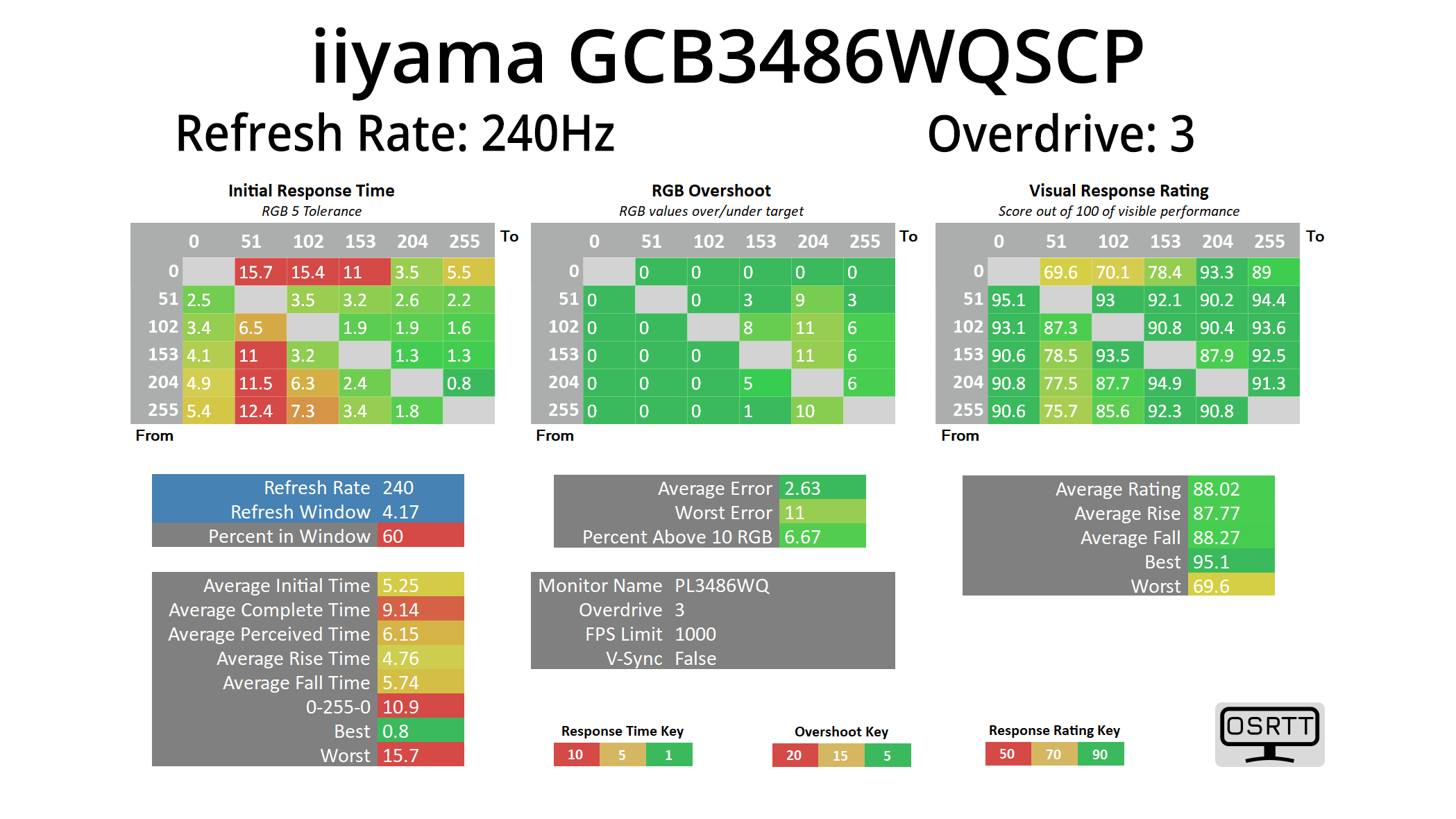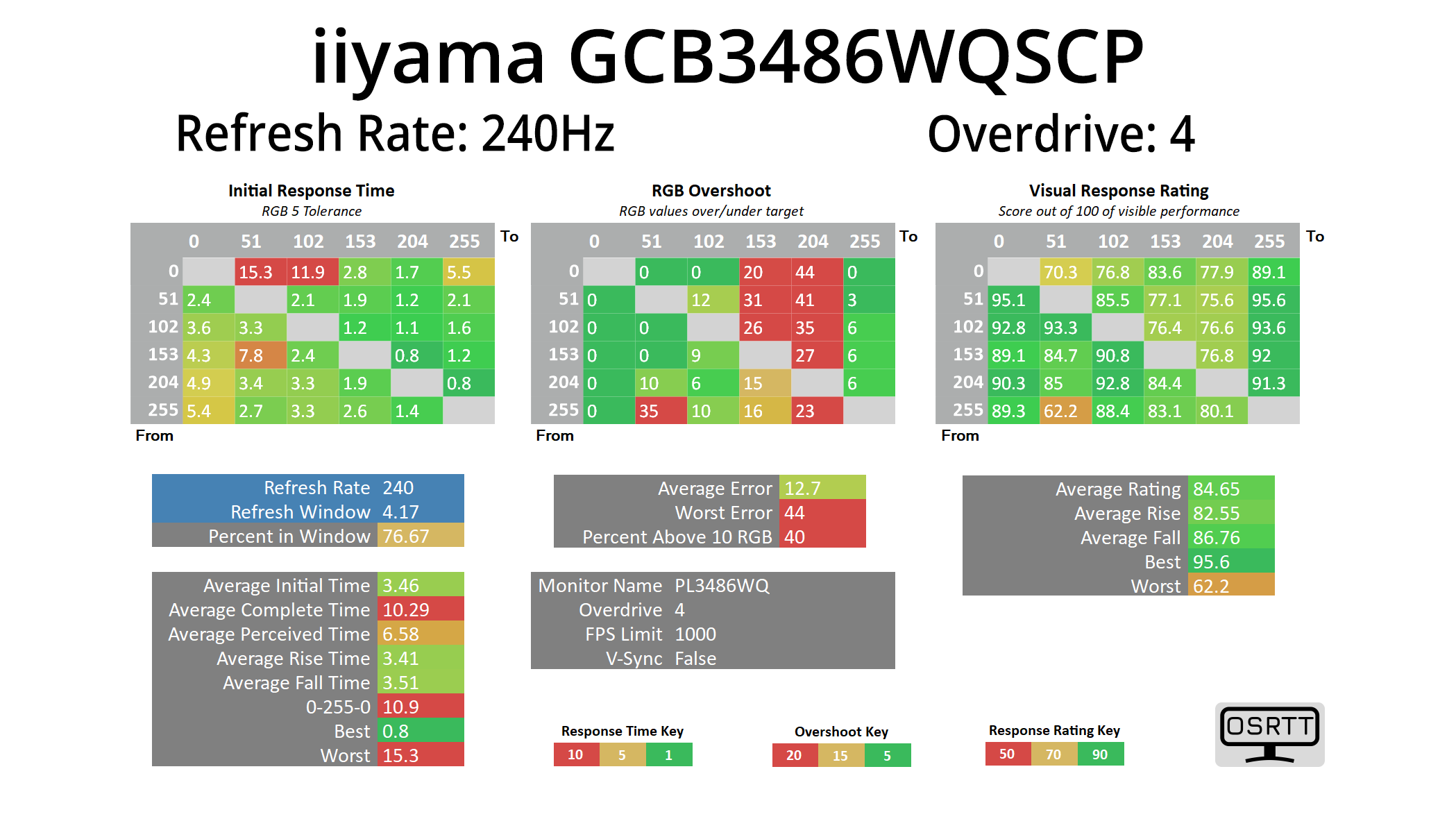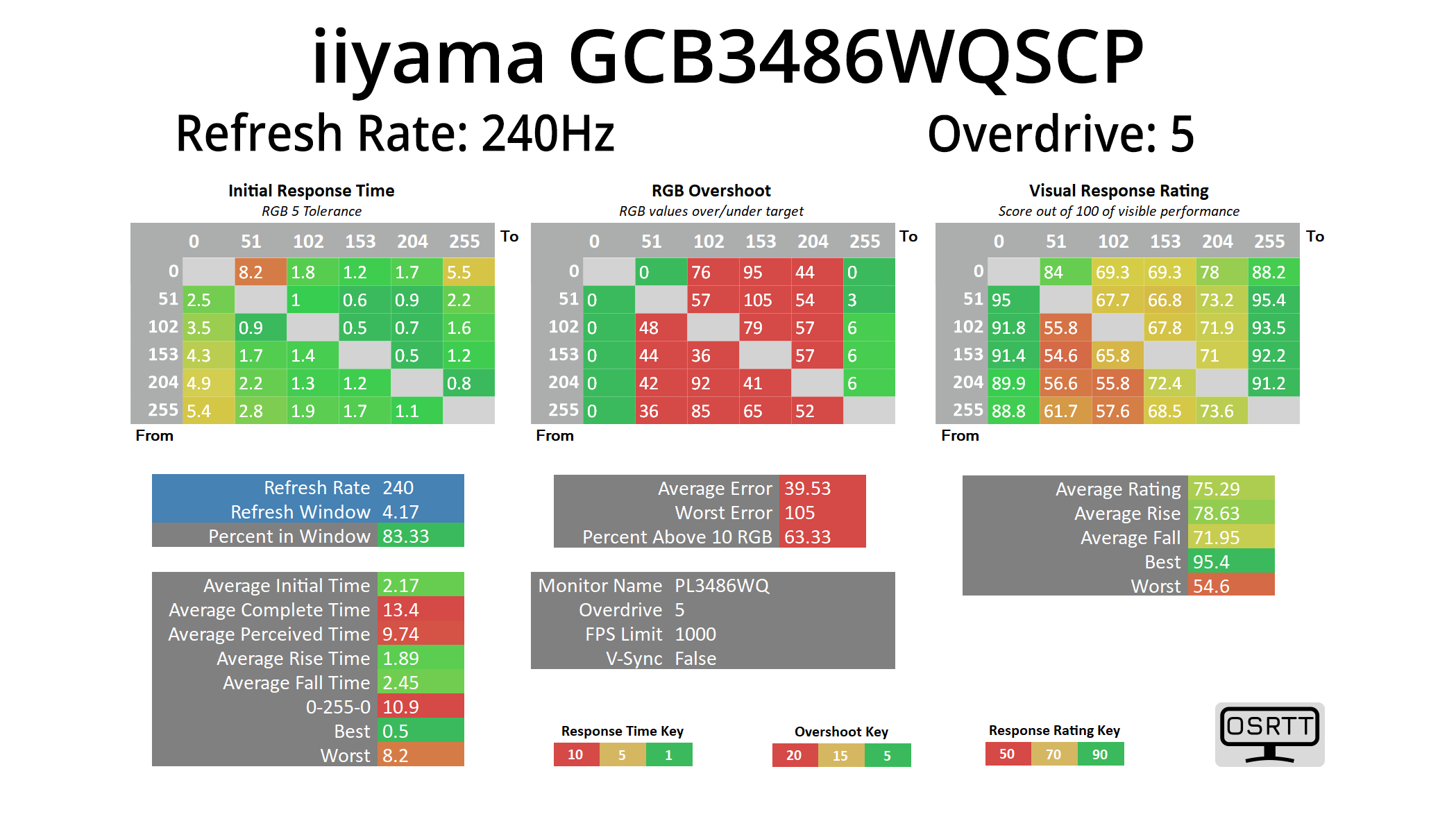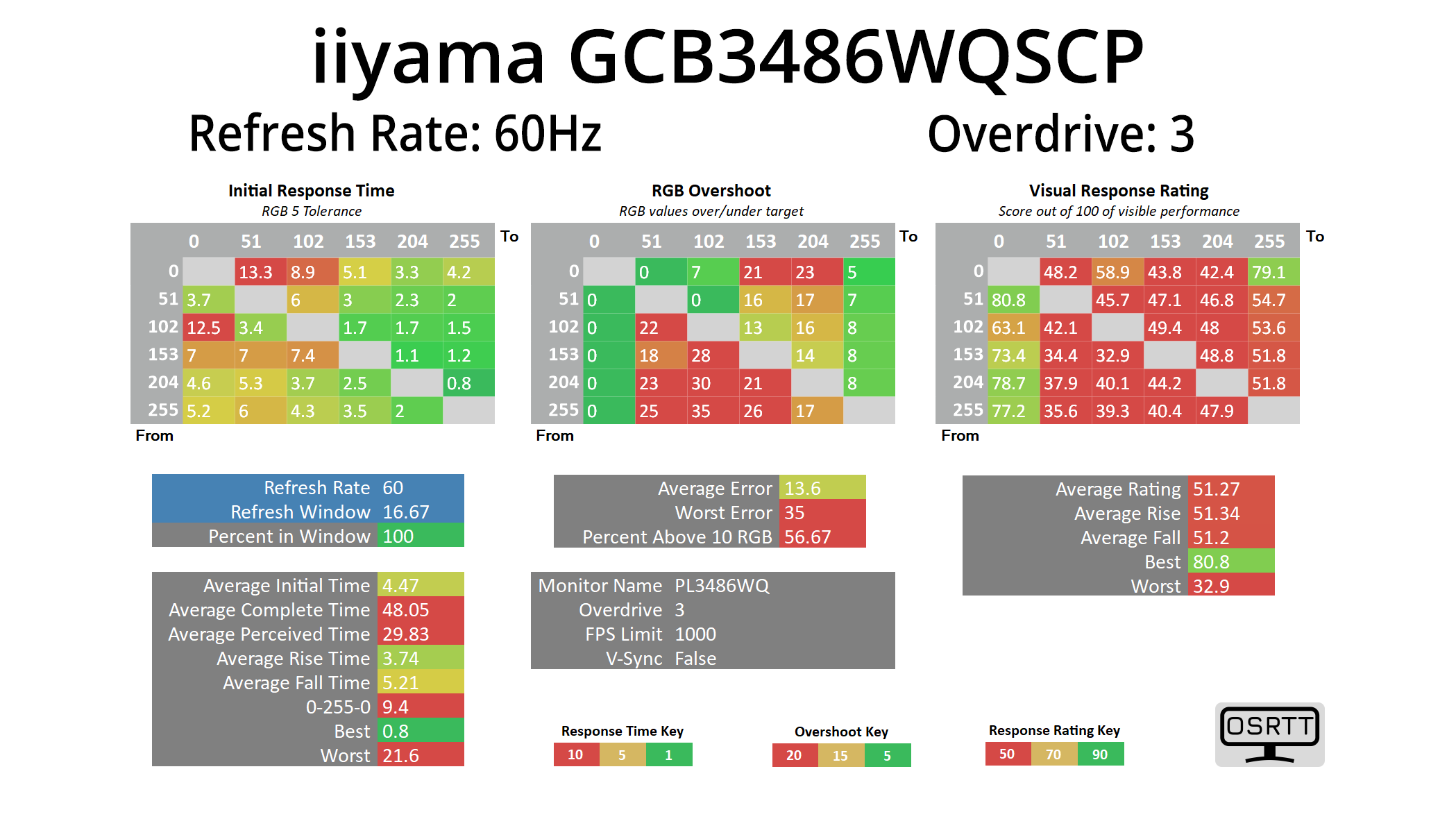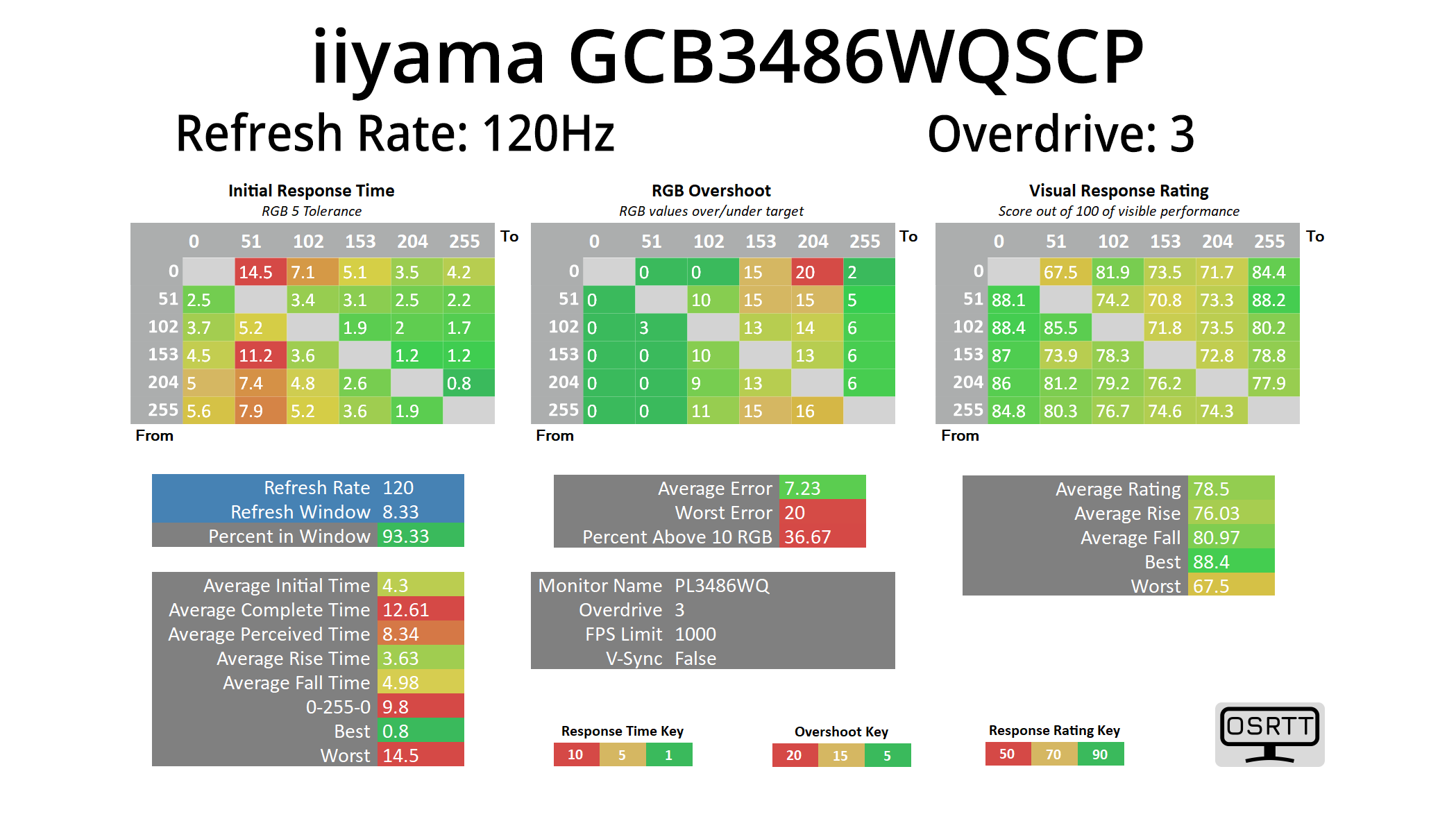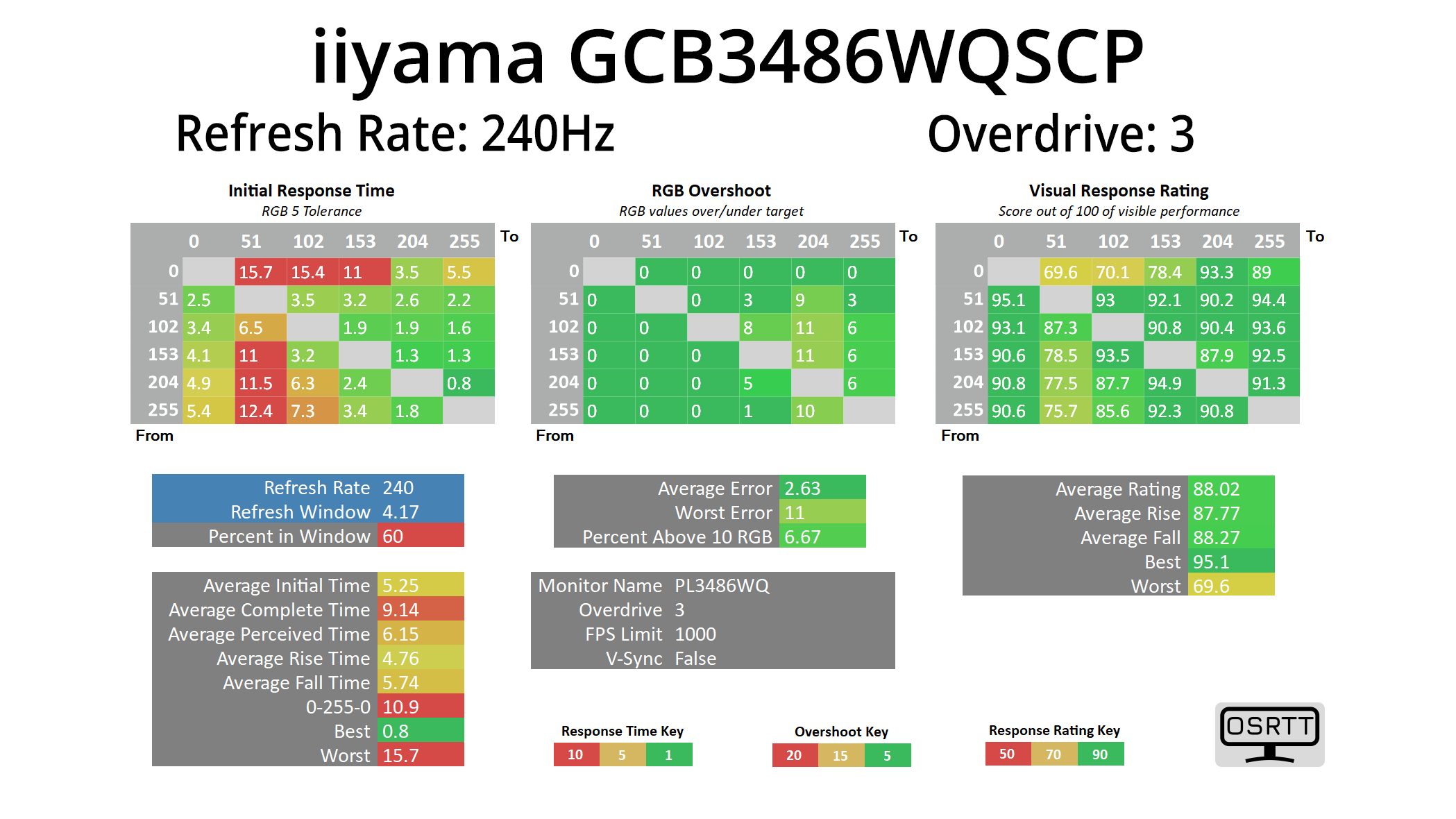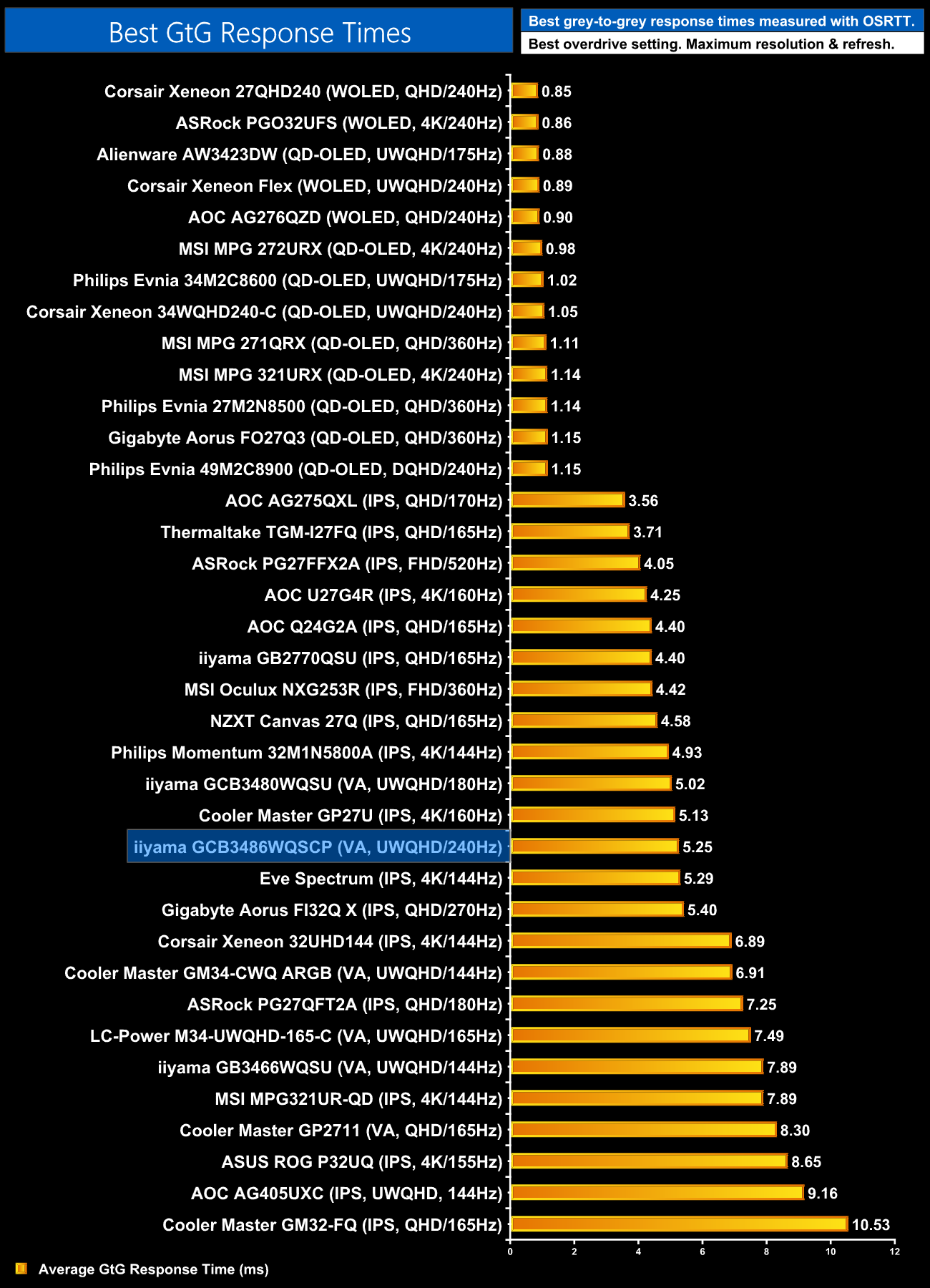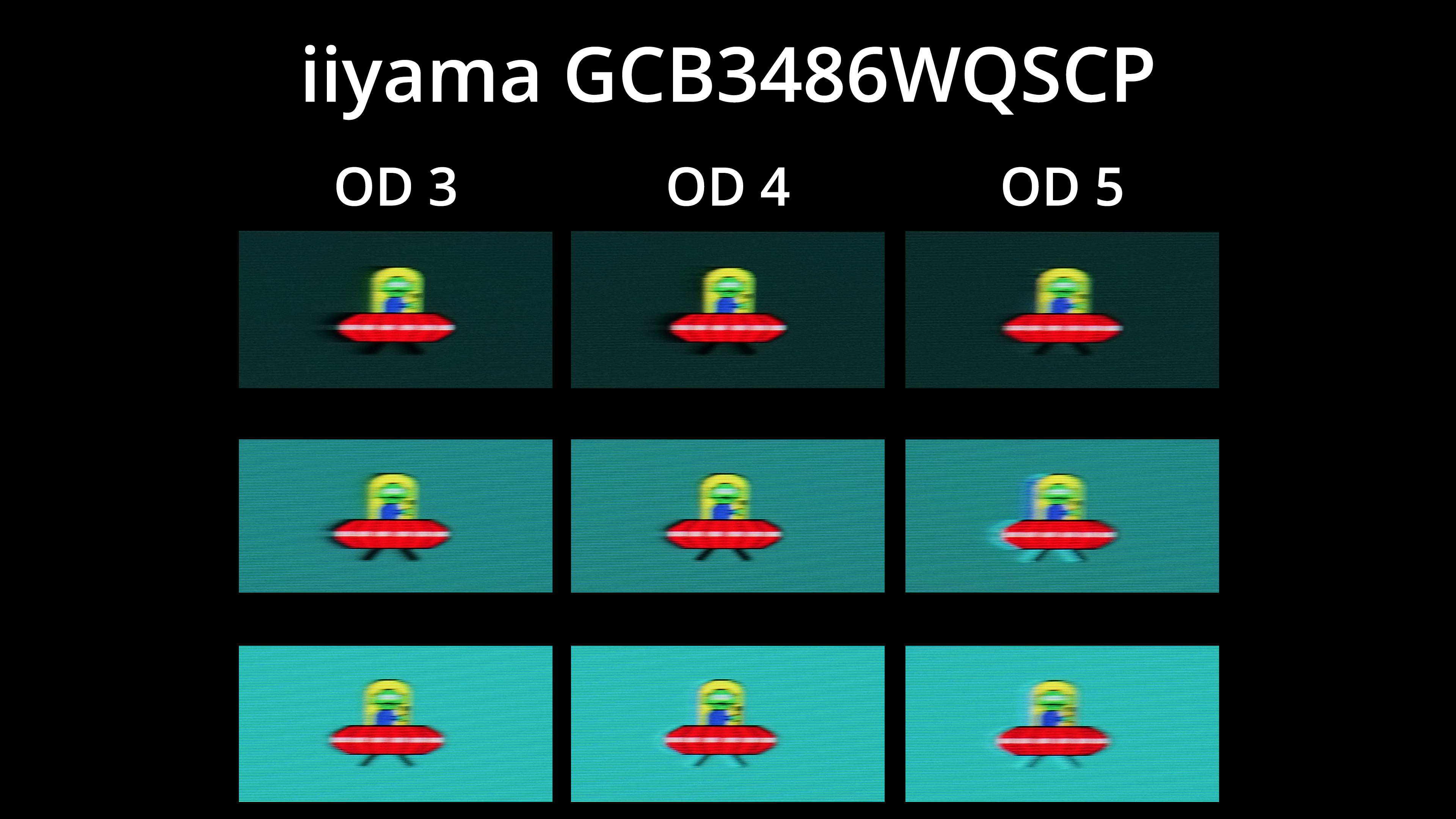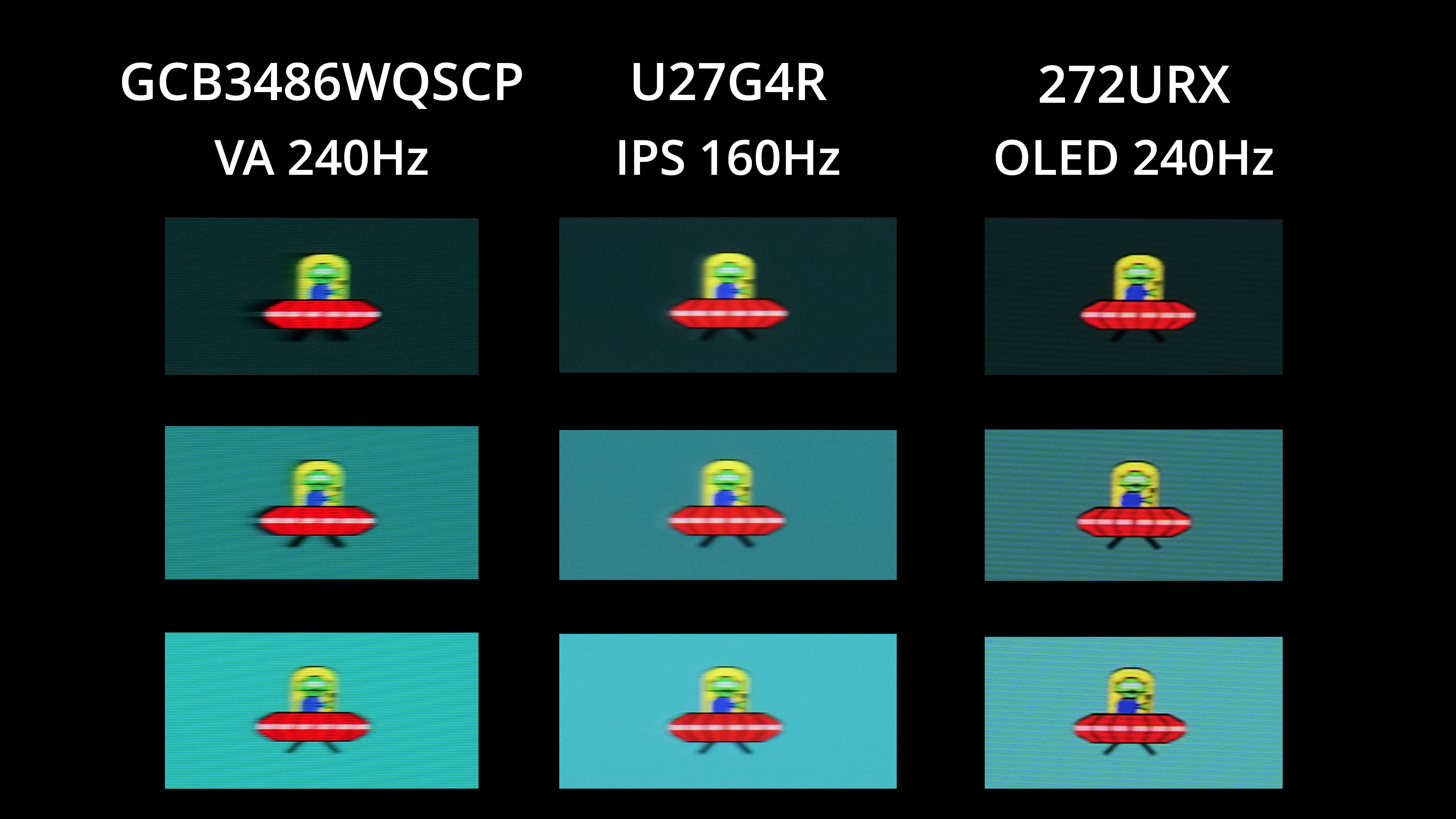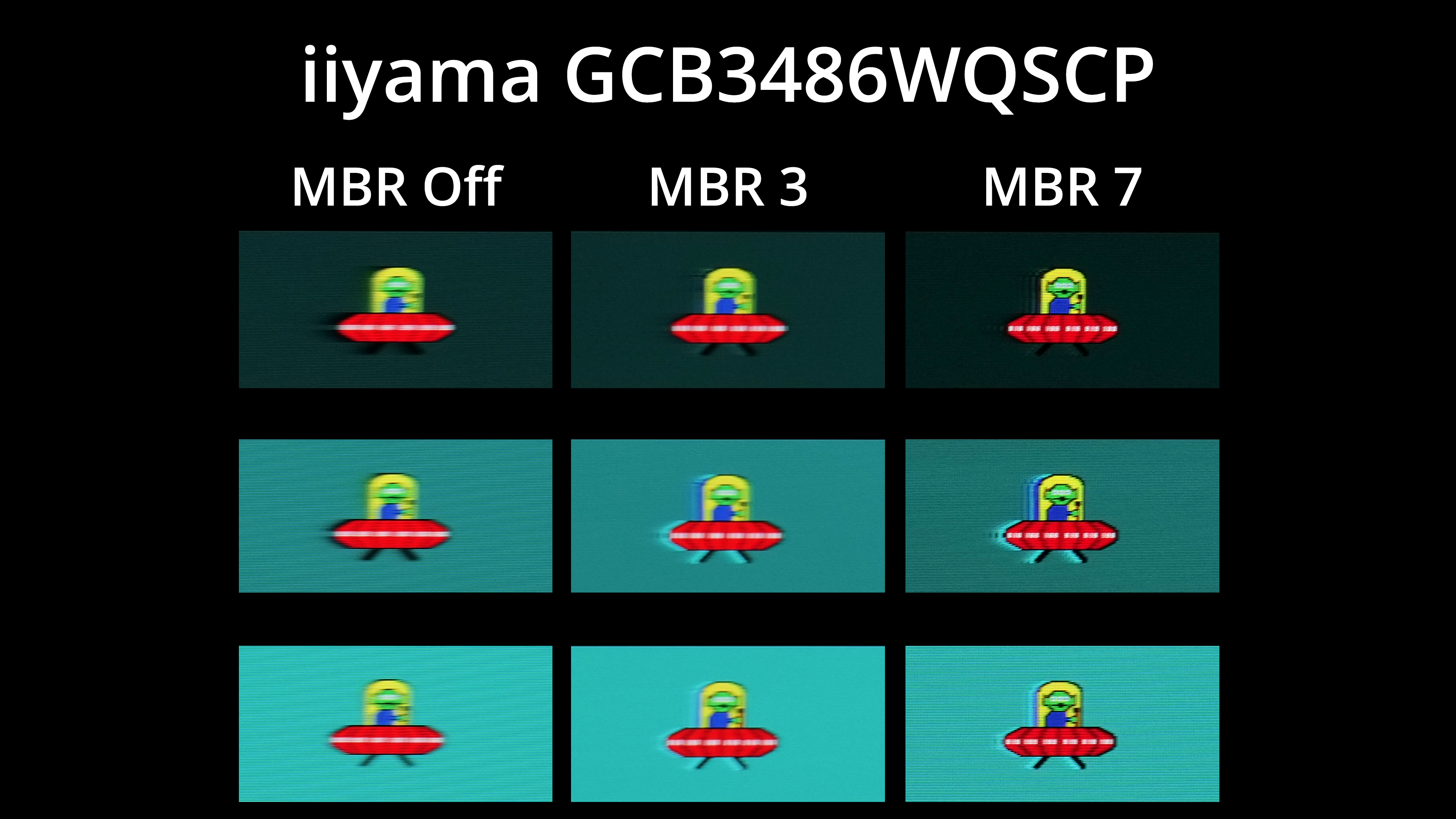We use the Open Source Response Time Tool (OSRTT), developed by TechTeamGB, for our response time testing. This measures grey-to-grey response times and presents the results in a series of heatmaps, the style of which you may be familiar with from other reviews.
Initial Response Time is the time taken for the panel to transition from one colour to another, where lower values are better. We present the initial response time, so overshoot is not taken into account and is measured separately. We use a fixed RGB 5 tolerance for each transition.
Overshoot is the term given for when a monitor's transition exceeds or goes beyond its target value. So if a monitor was meant to transition from RGB 0 to RGB 55, but it hits RGB 60 before settling back down at RGB 55, that is overshoot. This is presented as RGB values in the heatmaps – i.e. how many RGB values past the intended target were measured.
Visual Response Rating is a metric designed to ‘score' a panel's visual performance, incorporating both response times and overdrive. Fast response times with little to no overshoot will score well, while slow response times or those with significant overshoot will score poorly.
We test the GCB3486WQSCP at 240Hz, using the three best overdrive settings found within the OSD.
240Hz
In terms of response times, I've actually skipped over the overdrive off mode, along with settings 1 and 2, as they are just a bit too slow. Overdrive setting 3 is the first one that's worth using and it does deliver solid results, averaging 5.25ms. There's still some slower transitions, with the results in the top row indicating some dark-level smearing which is typical of a VA panel, and we can see refresh rate compliance is hitting 60%, or 70% if we give an extra 1ms leeway. However, there's also very little overshoot, so let's see what setting 4 can do.
This does improve response times a good chunk, with the average now at 3.46ms, while the rise times from dark shades are much improved. However, this does come at the cost of some overshoot – the average error of 12.7 RGB values isn't terrible, but it does result in some visible overshoot as we'll see shortly.
Lastly, overdrive setting 5 can also be ignored as the overshoot is pretty horrible.
Variable Overdrive?
I personally think setting 3 is the most well-balanced, but the bad news is that iiyama hasn't configured it to behave differently at lower refresh rates – it's fine down at 120Hz, but at 60Hz the overshoot is pretty significant, so it's not an ideal solution if you are an adaptive sync gamer.
Best results compared
In terms of how these results stack up to the competition, if we ignore OLED, it's pretty middle-of-the-road for an LCD monitor – we have seen faster, but we also have to remember the price is just £350.
Motion clarity
Here we can see a visual representation of those overdrive modes – setting 4 does clean up a good amount of the dark smearing we see on setting 3, but you can also see the overshoot that's introduced on the bottom image. Some people may be fine with that, but I personally find it a little distracting. You can also see why setting 5 is one to avoid!
For some comparisons then, I've roped in the AOC U27G4R we reviewed recently, and despite the iiyama monitor offering a higher refresh rate, motion clarity is fairly similar between the two, though you can clearly see the difference the dark-level smearing makes versus an IPS panel which doesn't have that issue. Just for fun, I also included the MSI 272URX, a 240Hz OLED monitor which is setting the standard for motion clarity and response times – though it also costs over twice as much as the iiyama!
iiyama does have one final setting to try and improve things though, that being Motion Blu Reduction, AKA backlight strobing. There's seven different settings to try, but there's a few clear downsides so ultimately I don't think MBR is worth using. For one, it forces the overdrive setting 5, resulting in a lot of overshoot, which I don't quite understand, while there's also some visible signal cross-talk, resulting in a double-image effect. On top of that, the MBR 7 setting offers the best clarity, but it also caps brightness at below 140 nits and it cannot be used with adaptive sync, so I think that will rule it out for a lot of people.
 KitGuru KitGuru.net – Tech News | Hardware News | Hardware Reviews | IOS | Mobile | Gaming | Graphics Cards
KitGuru KitGuru.net – Tech News | Hardware News | Hardware Reviews | IOS | Mobile | Gaming | Graphics Cards


